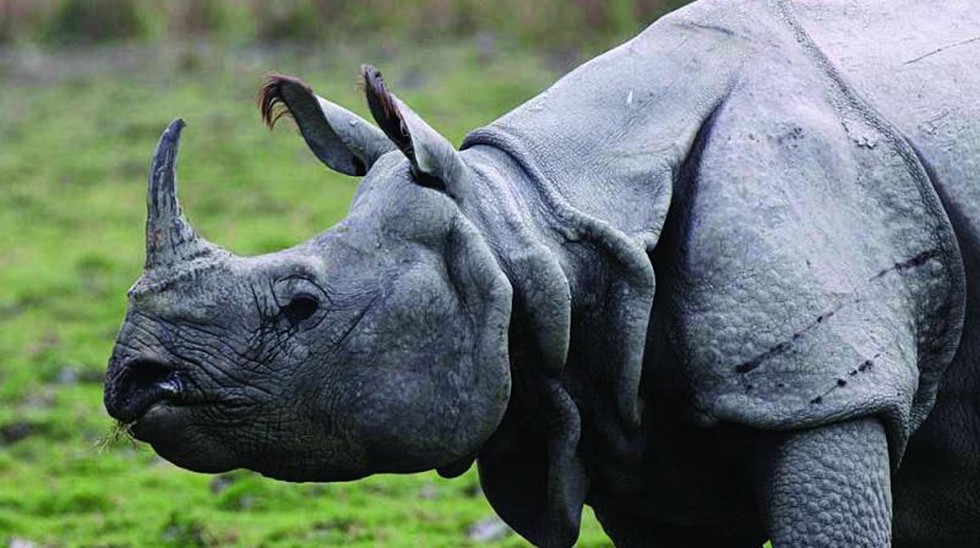Rhinoceros
26-08-2023
11:25 AM
1 min read

Overview:
According to a study, published in the latest edition of People and Nature by the British Ecological Society, the horns of rhinoceroses may have become smaller over time from the impact of hunting.
About Rhinoceros:
- The recent study analysed artwork and photographs of the animal spanning more than five centuries.
Five species face threat:
- Rhinos have long been hunted for their horns. The five surviving rhino species are threatened by habitat loss and hunting.
- The study found that the rate of decline in horn length was highest in the critically endangered Sumatran rhino and lowest in the white rhino of Africa, the most commonly found species in the wild and in captivity.
- This observation follows patterns seen in other animals, such as tusk size in elephants and horn length in wild sheep, which have been driven down by directional selection due to trophy hunting.
The Greater One-horned Rhinoceros:
- The greater one-horned rhino (or “Indian rhino”) is the largest of the rhino species.
- It is identified by a single black horn and a grey-brown hide with skin folds.
- It is one of the five species of Rhinos.
- The other four species are:
- White rhino: It is native to northern and southern Africa
- Black rhino: It is native to eastern and southern Africa
- Javan rhino: It is also known as Sunda rhino or lesser one-horned rhino
- Sumatran rhino: Critically Endangered species of rhino
- Habitat:
- Greater one-horned rhinos are grazers. When not grazing on land, they like to immerse themselves in water, where they also graze on aquatic plants.
- This species of rhino is commonly found in Nepal, Bhutan, Pakistan and in Assam, India.
- Protection Status:
- IUCN Red List: Vulnerable
- CITES: Appendix I
- Wildlife Protection Act, 1972: Schedule I
- The other four species are:

Source : The Hindu
